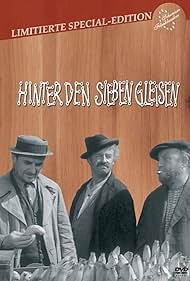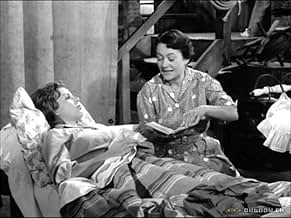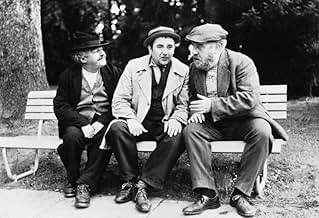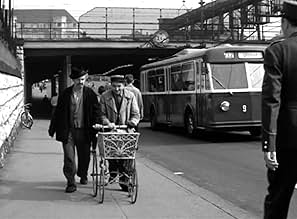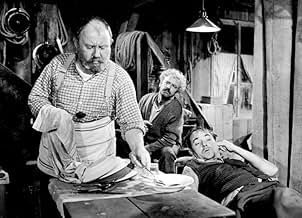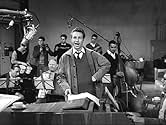The official version about Kurt Früh's films "Bäckerei Zürrer" (1957), "Hinter den Sieben Gleisen" (1959) and "Es Dach Ueberem Chopf" (1961) is, according to Werner Wider's reference work "Der Schweizer Film" (2 vols., Zurich 1981, 1989) that Früh's work stands under strong until copying influence from Italian Neo-realism, especially from the movies by Pietro Germi (1914-1974). As it seems, nobody could and still can imagine that Switzerland had once a film director, who was capable of having own ideas and being being able to transport them into movies whose quality can be compared to those of the surrounding states at the end of the fifties and beginning of the sixties. Here I propose a quite new interpretation: Früh calls his movies explicitly "Märchenfilme" (fairy-tale movies): The plot-line follows not only causality, but wonders are used as stereotypes. Amidst of the rails in Zurich main station, three old bums (Clochards) live in a shabby hut. One evening, when they come home, they here someone crying in their dwelling. They find a young German (foreign) mother who is just about giving birth. By aid of their friend, an older gate-woman, the baby is delivered. - Did Früh here not simply give a modern version of the Caspar, Melchior, Balthasar Story, the Three King or Three Magi story in the gospel by St. Matthew 2? But so artistically disguised that nobody ever came to this disclose the background in more than half a century? The oldest of the three Kings has been named "Balthasar": he had a big dark beard. In Kurt Früh's version his name is "Barbarossa" and his beard is red. In the tradition, it has been Emperor Barbarossa who has brought the relics of the three Saint Kings in their definitive place. If this interpretation is correct, then Inge and her child stand for Mary and the newborn Christ. He, however, did not enter this world in a railroad hut, but at least in an animal-stable. An interesting non-parallel between the two versions is that, not untypical for Früh, his "Mary" (Inge) has been left by the child-father, she is does not searching for an asylum together with her Joseph, but attempts suicide by running in front of an engine. Although the three Clochards, unlike the three Magi, do not come to visit the new-born child and crowd it by gifts, they start to work for mother and child and bring home their newly purchased items on every payday. An interesting detail: As we learn later in the movie, the father of Inge's child is the son of a producer of paper-products (stationary). We know, that paper is made from wood, and Joseph in the Bible was a carpenter.
